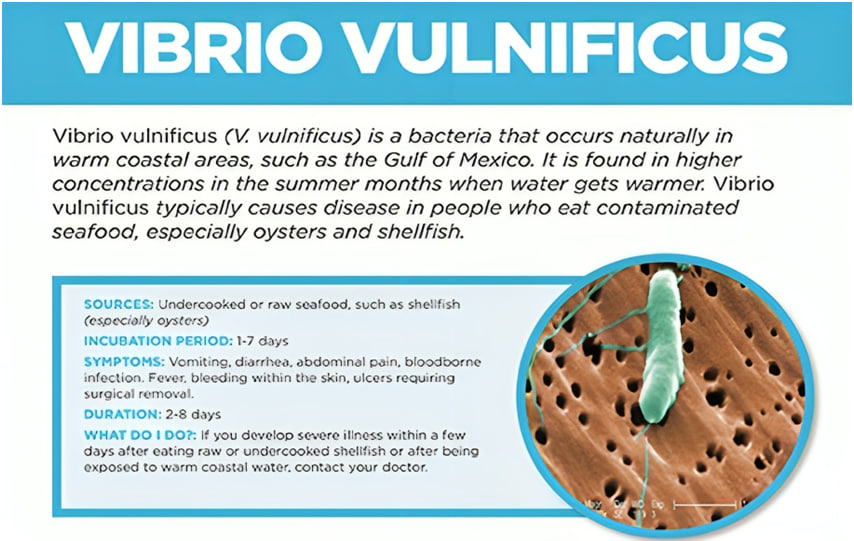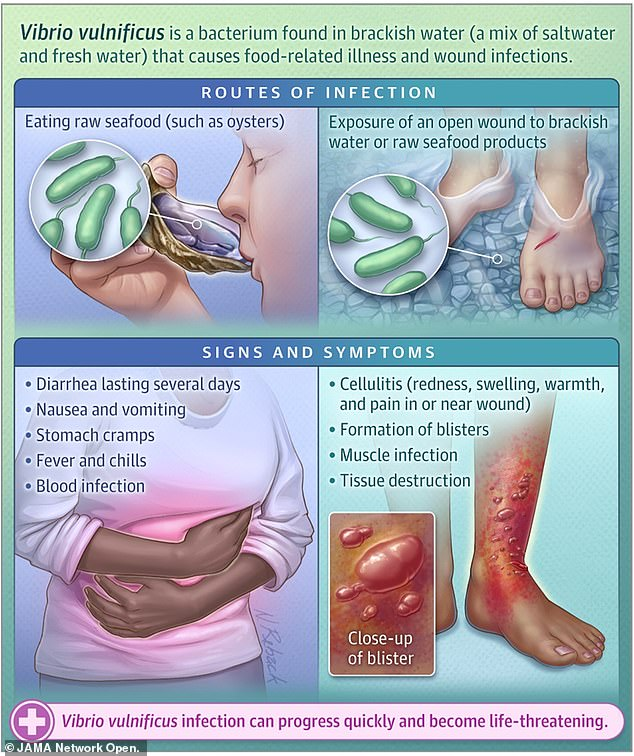Free Courses Sale ends Soon, Get It Now


Free Courses Sale ends Soon, Get It Now



Copyright infringement not intended
Picture Courtesy: saniprofessional.com
Context: A serious bacterial infection that can destroy skin and soft tissue is spreading in the US, according to the US Centers for Disease Control and Prevention (CDC). The agency warned that Vibrio vulnificus, also known as flesh-eating bacteria, can cause severe illness and death in people with certain health conditions.
Details
Vibrio vulnificus
About
Symptoms

Picture Courtesy: www.dailymail.co.uk
Impact
Challenges
Antibiotic Resistance
Seasonal Variation
Cure or Treatment
Way Forward in dealing with Vibrio vulnificus infections
Conclusion
|
PRACTICE QUESTION Q. The term “Vibrio vulnificus” is frequently seen in the news. What is Vibrio vulnificus? A) A type of virus found in coastal waters. B) A species of bacteria found in warm coastal waters. C) A type of parasite commonly found in seafood. D) A fungal infection associated with swimming in freshwater lakes. Answer: B Explanation: Vibrio vulnificus is a species of bacteria that belongs to the Vibrio genus. It is commonly found in warm coastal waters, particularly in the Gulf of Mexico and along the southeastern coast of the United States. Vibrio vulnificus can also be found in other warm-water regions around the world. This bacterium is noteworthy for its ability to cause infections in humans, particularly when individuals come into contact with contaminated water or consume raw or undercooked seafood, such as oysters, clams, and shellfish. |
© 2024 iasgyan. All right reserved